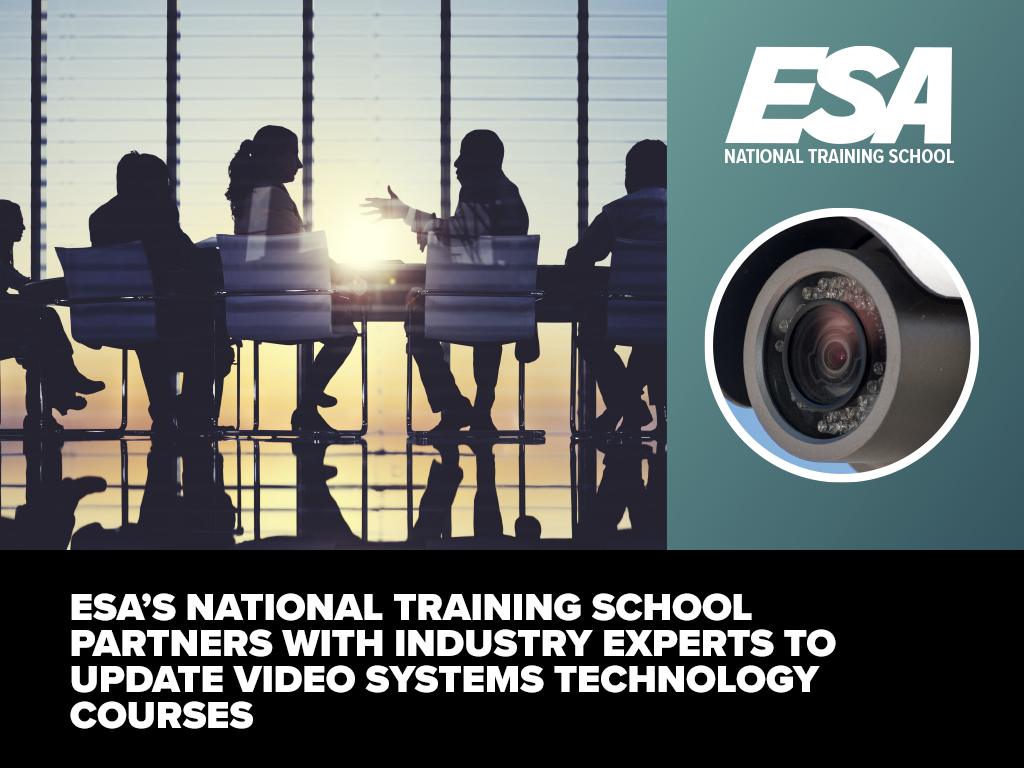ESA Certifications Evolve with Changing Landscape

There was a recent post on a popular alarm installers Facebook page about getting certified. The poster asked if it was worth it to get an ESA Certification. The resounding responses were YES!
ESA’s Certification program has been evolving since the early 2000s. It started with the flagship Certified Alarm Technician Level I program and has now grown to include 12 certification tracks that include intrusion, fire, integration, video and sales credentials.
Not only do regulators and AHJs recognize these certifications, companies are also using them as ways they can invest in their employees, provide payroll incentives and prove to their customers that their technicians are the best in their fields.
Unlike other training providers who promote their courses as certifications, ESA Certifications are much more comprehensive, because holding one means earning it and maintaining it. ESA believes that training for the electronic security industry is not a “once and done” activity. With codes and standards on a continuous improvement cycle, the fast pace of new technology developments and advancements in life safety techniques, technicians need to be continuously learning.
For this reason, ESA’s education model is built upon continuing education courses. These are not for pieces of paper you get after taking a class, but for expertise that is continuously earned through work experience and knowledge attainment.
In order to keep ESA’s training on track with the rapidly changing training needs in the electronic security and life safety industry, the Education Committee created a subcommittee whose focus is to review each ESA Certification and the competencies taught in the certification tracks. This subcommittee also reviews best practices of certification programs from other disciplines in order to ensure ESA’s certification process is still using accepted renewal requirements.
Recently, the committee realized that more and more widely recognized certifications are allowing field work to be used as part of the continuing education requirements. They quickly implemented a change so that CEU credit will be granted for verified work experience during a renewal cycle. Up to 8 hours of the required 24 hours of CEUs can be granted for 1,000 on the job training hours.
In addition to permitting on the job hours for CEUs, the subcommittee also changed the amount of documentation that certification holders must submit at the time of renewal. Compared to other certification programs, they realized that ESA’s program was requiring a lot more paperwork, which slowed down the process and deterred people from maintaining their credential. Therefore, beginning in 2020, certification holders only need to report their CEU credits, with no backup documentation required at the time of renewal. However, it will still be the responsibility of each certification holder to maintain records documenting qualified continuing education credits, as they may be subjected to a random audit.
Changes to ESA Certifications will continue in 2020, with the certification subcommittee considering allowing testing and training from other entities – like NICET – to be used in combination with ESA training and testing. They will also be creating certification exams so that people that took training or testing beyond 5 years can take a test in lieu of retaking courses. ESA will continue to empower the certification subcommittee to enhance the certification program so that companies and employees can use the certifications as proof of their ongoing commitment to keep abreast of new codes and standards, equipment options and advanced methods to protect people and property.




